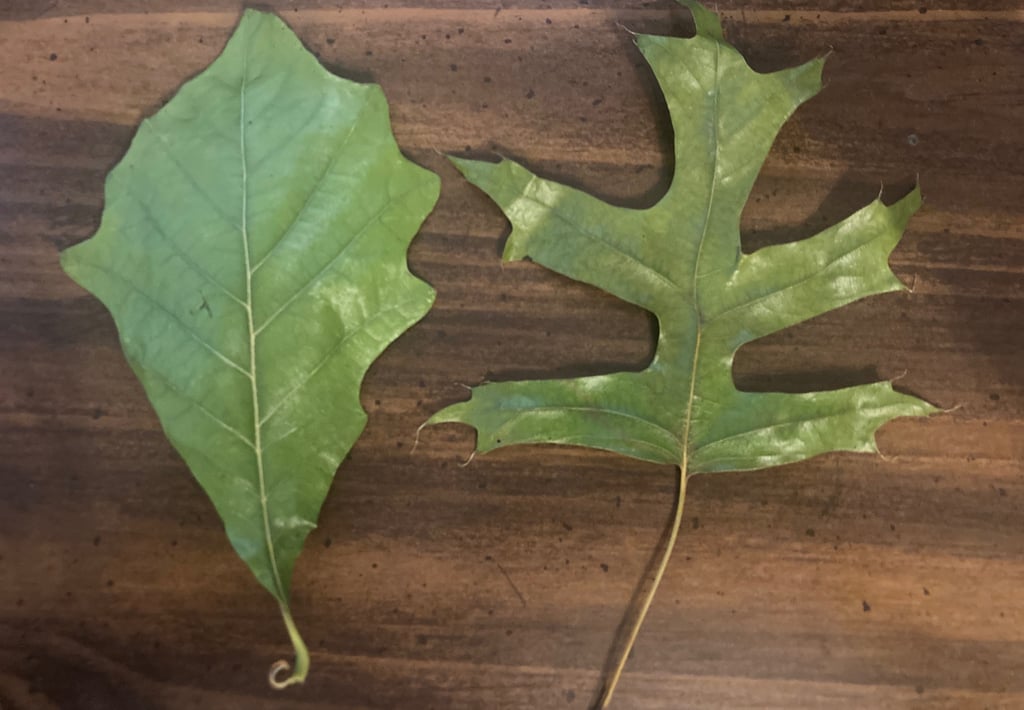Tree Story #2: Oak wilt
Lucy Rea
7/26/20253 min read


This story is about how small differences in anatomy can be the difference between survival and death when it comes to oak wilt.
First let’s cover what oak wilt is for the uninitiated. Oak wilt (also known by its scientific name Bretziella fagacearum) is a fungal pathogen that infects oak trees through spores entering tree wounds and moves through their vascular system. It then spreads from population to population via root grafts, where oak trees have connected underground to other oak roots in the surrounding area. When the trees die, the fungus forms a spore mat whose sweet scent inspires beetles to roll around in it and pass those spores onto new oaks. Oak wilt has spread rapidly, affecting oak populations in the Eastern and Midwestern regions of the United States, as well as oaks in Texas in years since it was discovered in the 1940s.
So how do oaks defend themselves from fungal pathogens like oak wilt? Similar to our immune system, oak trees respond to pathogens by forming tyloses, which are basically little balloon-like plugs in their vessels to prevent the spread of pathogens throughout the system. The tyloses along with the fungal matter in the oak’s vessels cause the “wilt” in oak wilt, by blocking the water and nutrients from reaching the leaves. Without water, leaves can’t photosynthesize and will eventually turn brown and fall off.
Now here’s what’s interesting: oak wilt infected oaks from the red oak lineage are extremely susceptible and die within the same growing season that they become infected. But white oaks can live for several more years while infected with oak wilt.
(Side note: did you know there are different “lineages” of oaks. It has to do with the way they evolved. Check out this Scientific American article for more on oak evolution. For this story’s purpose to help you distinguish between the two lineages – just know that red oaks tend to have bristle-tipped leaves, whereas white oaks have more rounded, lobed leaves.)
Okay, so red oaks die right away, but white oaks live for several years while infected? How is that possible when both are oaks? The secret is in the structure. Red oaks tend to have bigger vessel diameters – which is great for quickly moving water – but unfortunately makes it difficult to block the fungus’s spread. White oaks, on the other hand, tend to have smaller diameter vessels enabling infected oaks to effectively block the spread of fungus. This enables white oaks to localize the area of the tree affected by wilt to one part of the tree and allows water to continue flowing to the rest of the tree. In some cases, white oaks can even fully recover from oak wilt infections. In red oaks, the fungus spreads rapidly throughout the whole tree, causing death in the same year as they become infected.
Clearly, oak wilt can devastate a forest full of red oaks. If that worries you, you’re in good company. Forest health scientists and managers have been working for decades to find solutions to limit the spread of oak wilt and are using new technologies to detect oak wilt on the landscape early so it can be effectively managed.
To me, the fascinating aspect of this story is that the white oaks are more resilient than the red oaks to oak wilt, given that they are both oaks. I think this really goes to show how even when things seem like they’re the same, there are a host of underlying factors that affect how much they will be affected by a disturbance. What may be detrimental in ideal circumstances, like having small vessels that move water more slowly, may be just what is needed to survive adversity
More reading
